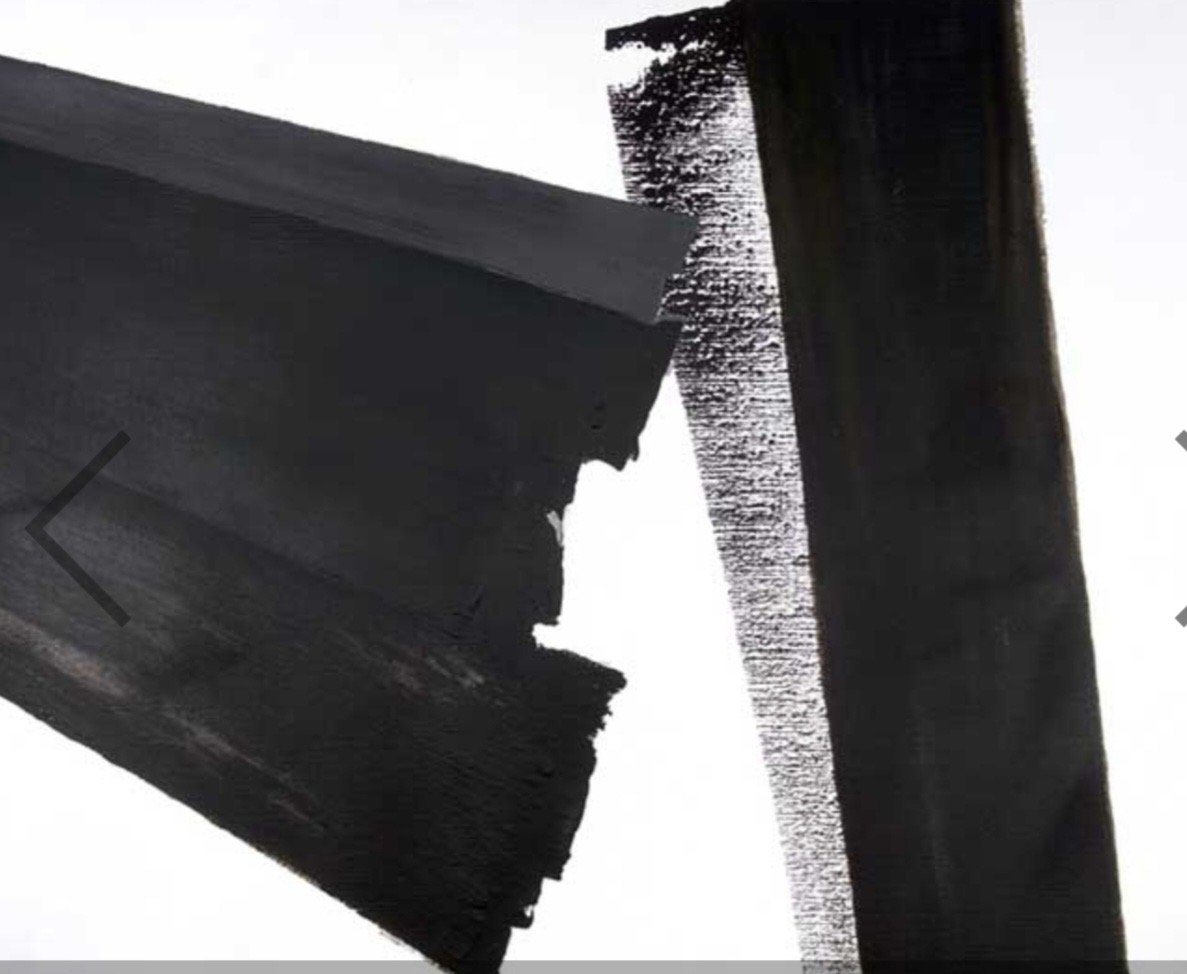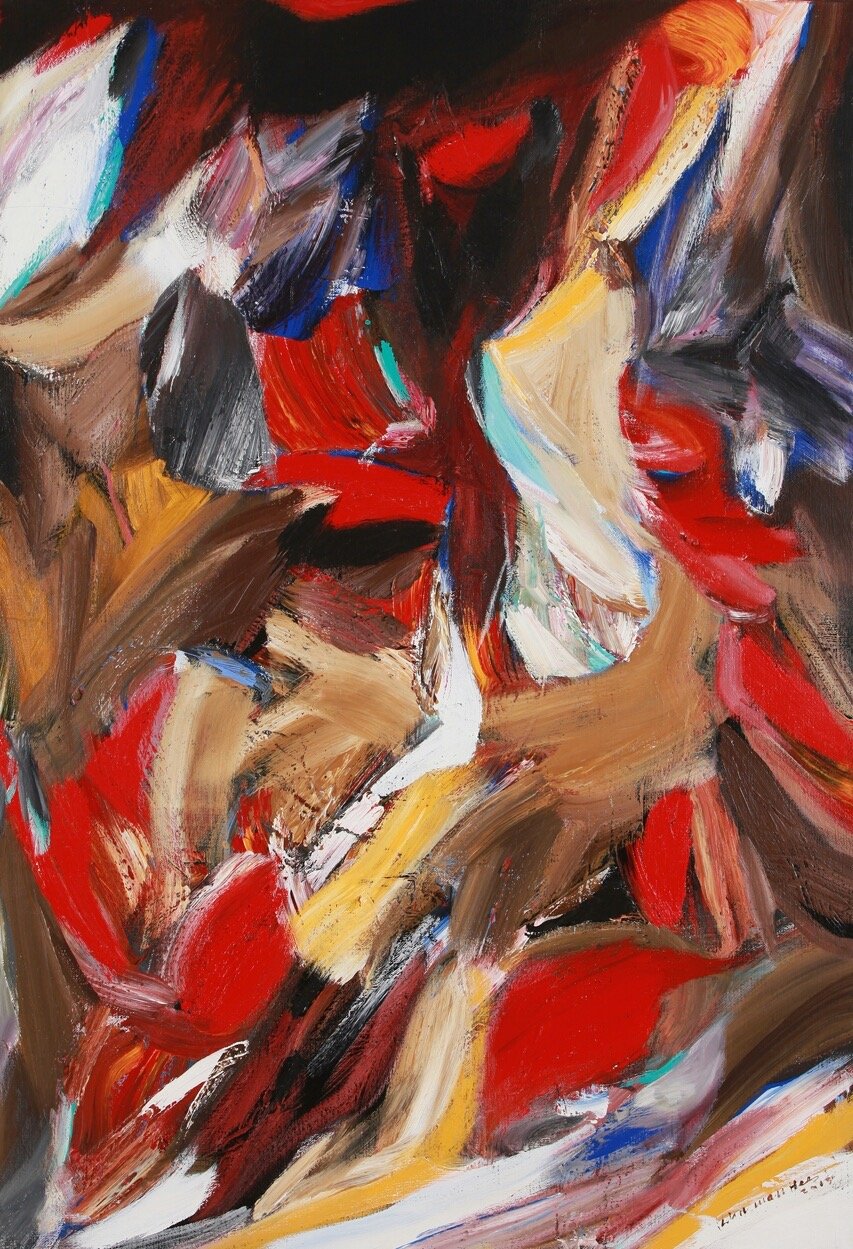The Scientist-Turned Abstract Painter, Man Hee Kim
| He Abandoned His Successful Career as a Scientist to Become a Painter
| "I Want to Depict the World from the Heart, Not Through Imitation"
| "Harmonizing Eastern and Western Sensibilities Like Yin and Yang"
| The "Contrived Inevitability" Created by a Scientist's Eye and an Artist's Hand
He put down his successful career as a scientist and stable professorship to pick up the brush. His lifelong artistic passion. The dream of his youth that his family had opposed could only see the light of day when he reached middle age. This is the story of abstract painter Man Hee Kim.
He held his first exhibition in 2001, well past the age of fifty. In 2005, he went straight to New York, a major market for contemporary art. Perhaps the deep well within him had finally brimmed over after many years. He wrestled with the brush for over 10 hours a day. His erupting artistic desire and unique scientific perspective birthed artworks that stopped viewers in their tracks and earned experts' acclaim.
▲ Abstract painter Man Hee Kim
He humbly calls himself a late bloomer. In fact, having concealed his brush in his bosom for decades, he should rightly be considered a self-taught master. "Instead of artificial imitation or rote learning, I depict the world from the heart onto the canvas," said Mr. Kim when I met him on the 11th. "I've never formally studied art, nor do I associate much with those in the art world," he introduced himself. Yet he is already a quite renowned abstract painter. Many experts say of him, "He has attained mastery." "What's the problem if a painter has blossomed without formal training?"
▲ From the Journey Santiago de Compostela series, by painter Man Hee Kim
He moved to the United States in 2005. Afterwards, he was picked up by the renowned Walter Wickiser Gallery with 50 years of history, allowing him to build quite a decent résumé in New York. It wasn't that New York immediately recognized him from the start. Having no major credentials in domestic or international art, he simply wanted to challenge himself in the big New York market. All he had in hand when he moved were a few letters of recommendation written by the directors of famous Korean art museums who had recognized his abilities.
▲ Painter Man Hee Kim conversing with the late Master PO Kim at an exhibition hall
Was it a twist of fate? In New York, he was able to connect with Master PO Kim (Kim Bo-hyun), a first-generation Korean-American painter who has since passed away. The Master unhesitatingly took him under his wing and welcomed him into his own studio. The Master also introduced him to various prestigious galleries and media outlets. Recalling the relationship, Kim said, "I spent over 10 years with the Master. Although he didn't directly teach me painting techniques, he would occasionally pose artistic ideas for me to ponder."
Kim's paintings are abstract, or one could say abstract expressionist. He draws lines on the canvas, creating planes intersecting planes. Before long, these overlapping planes are dressed in colors ranging from neutral to vibrant hues. The diverse lines, planes, and colors harmonize, each imbued with a life force of its own. In some paintings, there is the scorching heat of lava simmering deep underground for millennia before bursting forth onto the surface. Other works evoke Lao Tzu departing on his water buffalo after leaving behind the 5,000-character Tao Te Ching through the Hangukwan pass in his old age.
▲ From the Journey Santiago de Compostela series by Man Hee Kim
There is another aspect that distinguishes his abstractions. Some abstract painters may indiscriminately spray or defecate their primal urges underlying the subconscious onto the canvas. Putting aside artistry, it's only natural for viewers to feel discomfort. In contrast, Kim's works possess a refined elegance, as if the essence has been filtered through fine mesh multiple times. Eastern and Western sensibilities blend harmoniously like the Taiji symbol, the two forces revolving in tune rather than clashing. There are no conspicuous attempts to incorporate an Oriental spirit simply because he is a Korean artist. While using ordinary materials, there is something extraordinary about them. He typically paints with acrylics but sometimes uses diluted inks. The uninitiated might mistake it for traditional East Asian ink, which naturally lends an Oriental flair. As he explained, "As a scientist, I have a habit of observing things deeply. Just as I handle samples in the lab, I experiment with and observe the paints as my samples."
▲ From the Journey Santiago de Compostela series by Man Hee Kim
Many artistic works are products of chance - abstractions even more so. Abstract art allows for different interpretations imposed upon its ambiguous non-representational forms, making it the icing on the cake. One could deride it as "inscrutable," but the fact that "contemporary art" converges into "abstract art" is precisely why abstraction defies simple definition or judgment. In Kim's artworks, too, elements of "chance" appear. But the outcome differs. His "chance" could be seen as an "inevitability masquerading as chance" crafted by a scientist's eye and hand.
He must have aspired to become a painter from a young age. But "unfortunately," he was born destined to be a prodigy. In his youth, he was selected for a government-sponsored overseas study program in science and engineering. At a time when making ends meet was the top priority, becoming an "artistic vagabond" - as artists were dismissively called then - was unthinkable in his household after being sent abroad on the nation's dime.
▲ From the Journey Santiago de Compostela series by Man Hee Kim
He is currently active domestically in Korea after returning from abroad in 2020 when COVID-19 peaked. He has a studio near Mongchontoseong Station in Songpa-gu, Seoul, where he is busily preparing for exhibitions. "The Korean art world is layered with deep-rooted academic and social connections alongside networks of familiarity. At times, this makes it difficult to engage in genuine artistic practice. I aim to pursue my art without being swept up in such predicaments." Mr. Kim's insight of not needing to pay heed to anyone in particular will surely serve as wise advice for aspiring artists just making their debut.
He mentioned that in his youth, he painted typical representational works like still lifes, landscapes, and portraits. Not long after, he became deeply immersed in non-representational, or abstract, art - the approach of capturing on canvas what transcends visible subjects. Toward the end of the interview, he quipped with a wry smile, "Now, everything appears as abstract art to my eyes." He has attained mastery in abstract art.






